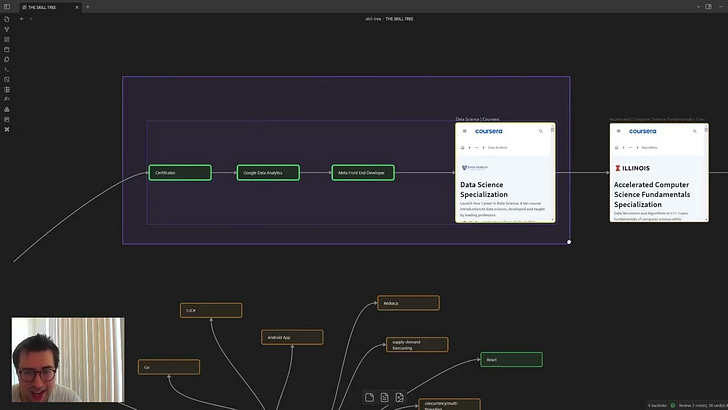Making a new video every week until I make $5 million - Week 6
What is Looker? A Beginner’s Guide to Google’s Powerful Business Intelligence Tool
In today’s data-driven world, businesses thrive on insights. From marketing teams tracking campaign performance to executives monitoring revenue trends, access to real-time, reliable data is essential. But raw data alone isn’t enough—you need the right tools to make sense of it.
Zero-Shot Forecasting Mortality Rates: A Global Study
This study explores the potential of zero-shot time series forecasting, an innovative approach leveraging pre-trained foundation models, to forecast mortality rates without task-specific fine-tuning. We evaluate two state-of-the-art foundation models, TimesFM and CHRONOS, alongside traditional and machine learning-based methods across three forecasting horizons (5, 10, and 20 years) using data from 50 countries and 111 age groups. In our investigations, zero-shot models showed varying results: while CHRONOS delivered competitive shorter-term forecasts, outperforming traditional methods like ARIMA and the Lee-Carter model, TimesFM consistently underperformed. Fine-tuning CHRONOS on mortality data significantly improved long-term accuracy. A Random Forest model, trained on mortality data, achieved the best overall performance. These findings underscore the potential of zero-shot forecasting while highlighting the need for careful model selection and domain-specific adaptation.
Working on Complex Systems
Throughout my career, I’ve worked in many complicated environments. For instance, I worked on optimizing driver-passenger matching in ride-hailing at a Uber's competitor. This context, like others, was technically challenging. Yet, nothing comes close in terms of complexity with my current experience at Google and two years there have refined my perception of complexity.
When Reasoning Beats Scale: A 1.5B Reasoning Model Outranks 13B LLMs as Discriminator
Large Language Models (LLM) with reasoning capabilities offer a promising path for improving candidate evaluation in planning frameworks, but their relative performance against traditional non-reasoning models remains largely underexplored. In this study, we benchmark a distilled 1.5B parameter reasoning model (DeepSeek-R1) against several state-of-the-art non-reasoning LLMs within a generator-discriminator LLM planning framework for the text-to-SQL task. For this, we introduce a novel method for extracting soft scores from the chain-of-thought (CoT) outputs from reasoning that enables fine-grained ranking of candidates.
Track4Gen: Teaching Video Diffusion Models to Track Points Improves Video Generation
While recent foundational video generators produce visually rich output, they still struggle with appearance drift, where objects gradually degrade or change inconsistently across frames, breaking visual coherence. We hypothesize that this is because there is no explicit supervision in terms of spatial tracking at the feature level. We propose Track4Gen, a spatially aware video generator that combines video diffusion loss with point tracking across frames, providing enhanced spatial supervision on the diffusion features. Track4Gen merges the video generation and point tracking tasks into a single network by making minimal changes to existing video generation architectures. Using Stable Video Diffusion as a backbone, Track4Gen demonstrates that it is possible to unify video generation and point tracking, which are typically handled as separate tasks. Our extensive evaluations show that Track4Gen effectively reduces appearance drift, resulting in temporally stable and visually coherent video generation.
The Value of Information from Sell-side Analysts
I examine the value of information from sell-side analysts by analyzing a large corpus of their written reports. Using embeddings from state-of-the-art large language models, I show that textual information in analyst reports explains 10.19% of contemporaneous stock returns out-of-sample, a value that is economically more significant than quantitative forecasts. I then perform a Shapley value decomposition to assess how much each topic within the reports contributes to explaining stock returns. The results show that analysts' income statement analyses account for more than half of the reports' explanatory power. Expressing these findings in economic terms, I estimate that early acquisition of analysts' reports can yield significant profits. Analysts' information value peeks in the first week following earnings announcements, highlighting their vital role in interpreting new financial data.



